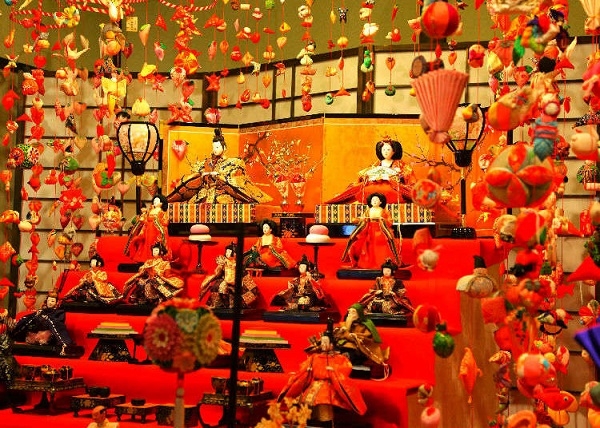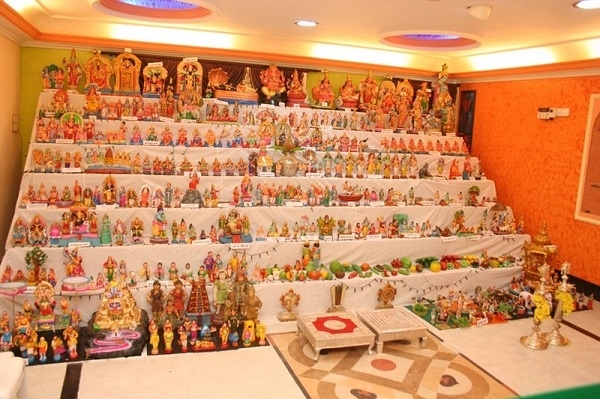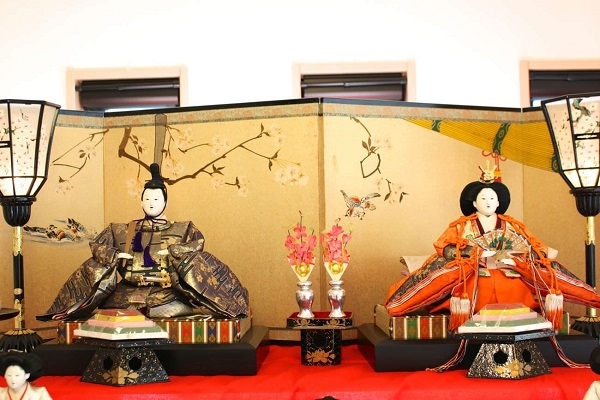Japan's own Navaratri 'Kolu'
Total Views |
-Anjali Ankad
India, which has a history of more than 1000 years, is a mixture of ancient wisdom, traditions, rituals, and various ethnicities. With culture being one of the aspects, India shares a connection with several countries across the globe including Thailand, Malaysia, European countries, and some other countries, too. Similarly, Japan also shares a lot with India culturally. Traditional links are a fixture on the table every time delegations of the two nations meet. In all of this, there is one distinct culture that India shares with Japan.

During the Navratri season, there is another celebration that takes place down south, called Bommai Kolu in Tamil, Bommala Koluvu in Telugu, and Bombe Habba in Kannada, which mean Divine Presence, Court of Toys and Doll Festival respectively. It is dedicated to the goddess Durga and is celebrated for nine days in India. People down in the South get ready for nine-day 'Golu' or 'Kolu'. However, when speaking about the doll festivals, there is a similar celebration taking place in Japan where they have a single-day counterpart.
Doll making itself is an ancient craft that is still in vogue in Japan. Therefore, involving dolls, there is a festival called 'Hinamatsuri', also known as 'Dolls Day' or 'Girls Day', which is celebrated on March 3. The festival, where figurines of royal personages are arrayed on red-carpet-draped tiers, derives its origins from a millennium-old Japanese custom — Hina-Nagashi — in which Hina dolls made out of straw are set afloat on a boat and sent down a river that finally joins the sea apparently taking away bad luck.
Firstly, South Indians set up wooden steps or Padis in odd numbers covered with fabric and then adorned with various dolls, figurines of gods, and goddesses. Kolu is wooden stairs covered with cloth in odd numbers on which various dolls are placed. Dolls are displayed in a hierarchy order with Hindu Goddesses: Parvathi, Lakshmi, and Saraswati being at the top Padi.

Kolu
The lower steps show dolls portrayed in various social and economic settings. The middle steps are dedicated to Saints, Gurus, religious figures, and respected people in India and the world. The higher steps display many dolls of the Hindu Gods and Goddesses. Sacred writings, marriages, day to day life scenes, court life, toys, and any kind of miniature kitchen tools that a young girl would enjoy playing with are displayed on the steps.
Speaking about the similarities to the Kolu tradition, in Hinamatsuri, the tiers are covered with a red cloth and adorned with a set of decorative dolls called Hina-ningyo, representing the members of the Imperial court. These dolls, which are displayed, are made of wood and decorated in traditional court dress from the Heian period.
The number of tiers displayed vary, but usually, the displays are of five or seven tiers. The top tier holds two Imperial dolls, the Emperor and Empress. The second tier holds three court ladies. The third tier holds five male musicians. The fourth tier holds two ministers. The fifth tier holds three samurais as the protectors of the Emperor and Empress. On the sixth and seventh tiers, a variety of small-sized furniture, utensils, carriages, etc., are displayed.

Emperor and Empress displayed at the top
The other thing to notice in both the traditions is that it emphasizes on the women/daughters. Japanese families normally ensure that girls have a set of the two main dolls before their first Hinamatsuri and these dolls are handed down from older generations to the upcoming generations. The dolls are put away as soon after Hina Matsuri is over as the Japanese believe that their daughter’s wedding would get delayed, if not removed. However, some families may leave them up for the entire month of March.
Similarly, in Kolu, Marapachi Bommai, which are wooden dolls of a couple symbolizing fertility and well-being, play an essential part in Bommai Kolu. These dolls are given to the bride by her parents to wish her a happy and prosperous married life. Every year, these dolls are decorated with new wedding dresses as a part of the Hindu tradition. Some of the dolls, including Marapachi Bommai, are very old as they have been handed down from generation to generation.
All these similarities indicate that these dolls play a significant role in both Japanese and Indian cultures. Although people come from different backgrounds and countries, fight and winning over evil will be the primary lesson in one's life.
Read More About South India's Kolu -

